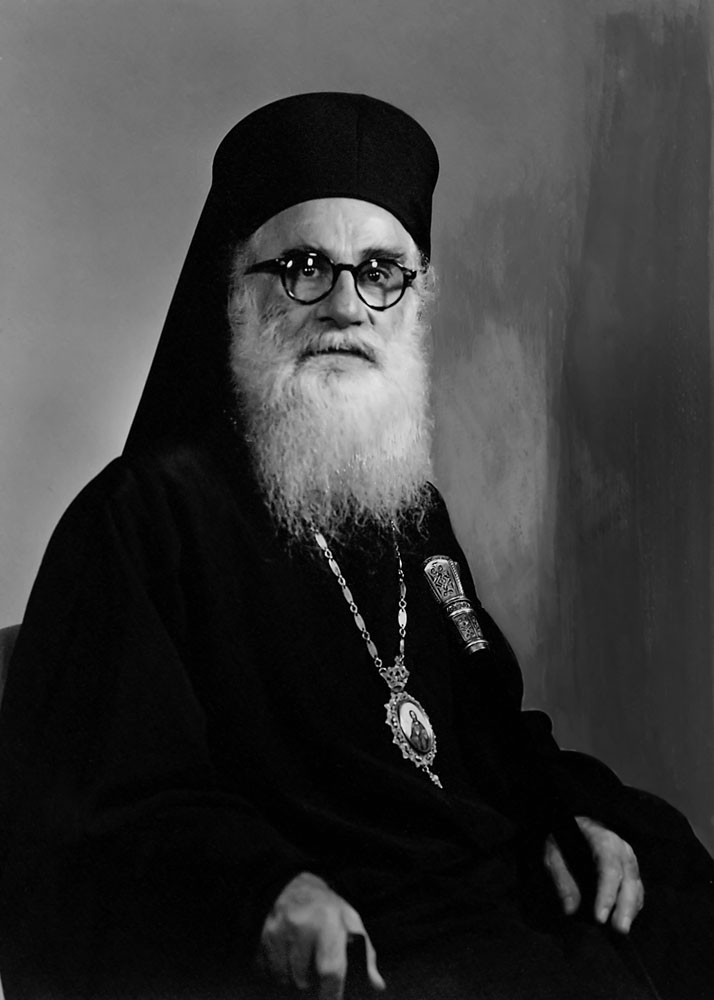Last week, I wrote about the remarkable pan-Orthodox youth festival in Pittsburgh in 1963. In that article, I mentioned in passing that the youth ministry alliance that put on the festival — CEOYLA — was, itself, organized with the blessing of Archbishop Michael, primate of the Greek Archdiocese in from 1949 to 1958. Archbishop Michael is very often forgotten when we think of Greek Archbishops of America — his predecessor was Athenagoras, who became Ecumenical Patriarch; his successor was the larger-than-life Archbishop Iakovos.
But we shouldn’t forget about Archbishop Michael; in fact, he’s on the short list of the very best hierarchs in American Orthodox history. In the book From Mars Hill to Manhattan, a history of the Greek Archdiocese up to 1972, the future Bishop George Papaioannou offers the following brief but compelling account of Archbishop Michael’s ministry in America:
The first time Athenagoras was confronted with the difficult task of selecting an Archbishop was when he was called upon to find a replacement for himself. The Greek Archdiocese was of his making; he felt it to be an inseparable part of himself. Now he was forced to begin his search to find a father for his own child. His choice was revealed to the Synod of the Patriarchate in November, 1949. It was Metropolitan Michael of Corinth, a man of the highest reputation, supremely qualified to become Archbishop of North and South America. A graduate of the Theological School of Halki, Michael advanced his theological studies in Russia, attending the theological schools of Kiev and St. Petersburg from 1915 to 1919. Upon his return to Constantinople in 1919, he was ordained Deacon and Priest and served the Church in various important positions both in Turkey and Greece. In 1927, he was assigned as Dean of St. Sophia Cathedral in London, England and served in that capacity until 1939. A pioneer in the Ecumenical Movement, he represented the Ecumenical Patriarchate and the Church of Greece at various interfaith conferences and greatly advanced the Ecumenical spirit, especially among Orthodox and Anglicans. In 1939 the Holy Synod of Greece, recognizing his great qualities, elected him Metropolitan of one of the most important dioceses, that of Corinth, replacing Damaskinos who had been elected Archbishop of Athens and All Greece.
Michael’s personality was different from that of Athenagoras. Athenagoras was a diplomat-churchman, Michael was an intellectual-mystic; the former had placed his emphasis on matters of administration and human relations, the latter on piety and religious awakening, discipline and sacramental life. What Athenagoras had been unable to do, Michael initiated and advanced with great success. In succeeding a man of Athenagoras’ stature and gifts as Archbishop of North and South America, Michael was faced with a great challenge. Remaining undisturbed by the popularity of his predecessor, he succeeded not only in consolidating the pioneer work of Athenagoras, but went on from there. His unremitting efforts greatly enlarged and expanded the functions and institutions of the Archdiocese, and molded the Greek Orthodox Communities in America into a well founded and efficient unit under the leadership of the Archdiocese.
Michael’s greatest contribution, however, was the founding of the youth movement, G.O.Y.A. It was this concern for the young people that gained him the recognition as a beloved friend of the youth. The G.O.Y.A. movement which began in 1950, had, by the time of his death on July 13, 1958, reached a membership of 30,000. Aspiring for official acceptance of Orthodoxy by the American people, he succeeded in having resolutions passed in twenty-six states of the Union recognizing Eastern Orthodoxy as a major faith in the United States. His efforts were recognized on the highest level of the United States government when on the 20th of January 1957, he became the first Orthodox Hierarch to take part in the Inaugural Ceremonies of a President, that of Dwight D. Eisenhower, by delivering an invocation. Michael proved to be an excellent choice for Archbishop of North and South America. As the editor of the Orthodox Observer wrote:
Michael was a deeply learned man, vastly informed, wonderfully retentive in memory, versed in many languages, an eloquent orator and a brilliant writer, and his august and imposing appearance presented in reality one’s impression of an Archbishop.
Michael was a spiritual man, with a deep devotion to his sacred mission of promulgating the Faith and traditions in America, who was appreciated mostly by his communicants for his exemplified life and for having personified the motto of his beloved G.O.Y.A., “Live the Orthodox Faith.”
Patriarch Athenagoras had sent to America, in the person of Archbishop Michael, the man he thought best qualified to succeed him as Archbishop, and the results of Michael’s remarkable ministry proved him right.

Thank you for sharing this history of Archbishop Michael, way ahead of his time .
He tonsured me an Alter boy at Holy Trinity Cathedral in Salt Lake City, Ut just a few days before he passed. Such a gentle soul.
Forgotten Legacy